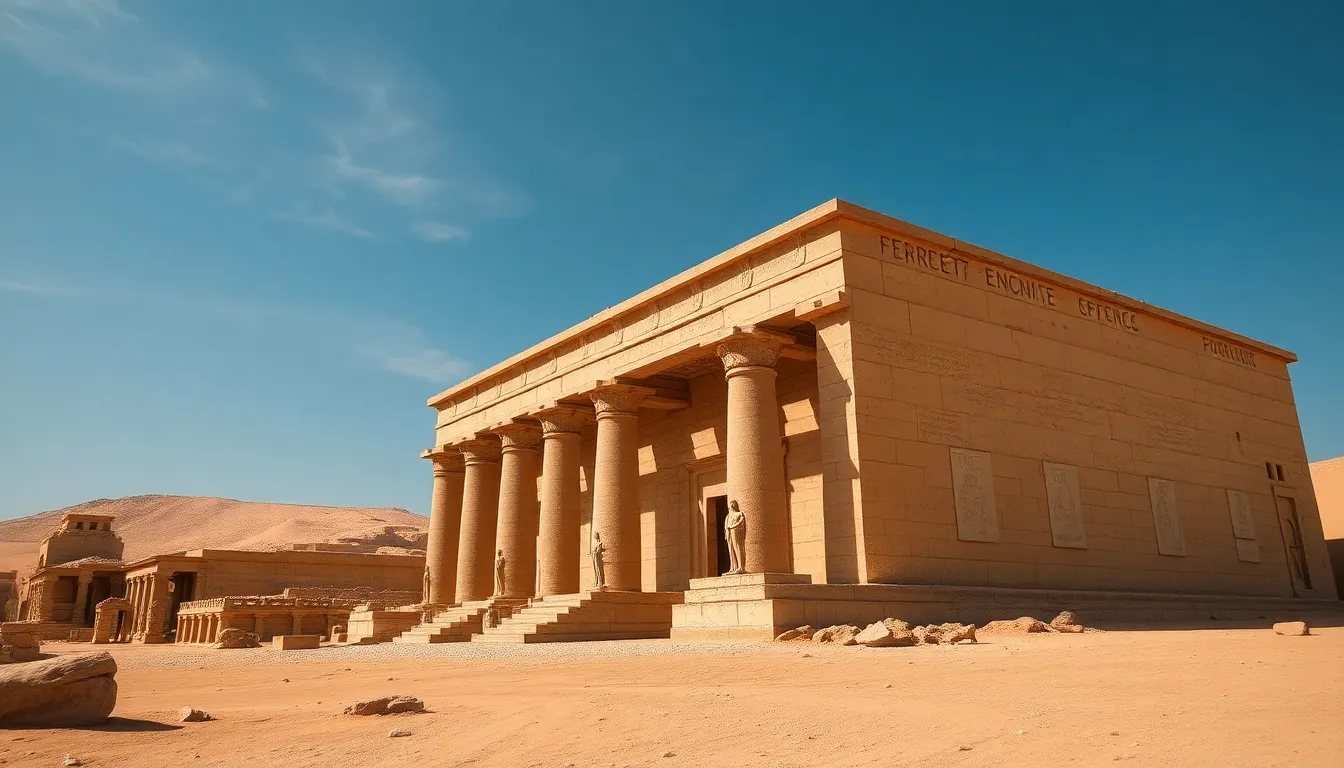The Forgotten Temples of Ancient Egypt: Rediscovering the Divine
I. Introduction
Ancient Egyptian civilization, renowned for its rich history and monumental architecture, has left behind a legacy of temples that reflect its profound spirituality and cultural practices. These temples served not only as places of worship but also as centers for economic activity and political power. In this article, we delve into the lesser-known temples of ancient Egypt, exploring their histories, significance, and the mysteries that continue to captivate historians and archaeologists alike.
II. The Historical Context of Egyptian Temples
The architecture of ancient Egyptian temples evolved significantly over millennia, reflecting changes in religious practices, political power, and artistic expression.
- Old Kingdom: Characterized by the construction of the first large stone temples, including the Sun Temple of Niuserre.
- Middle Kingdom: Marked by the revival of temple construction, with more elaborate designs and intricate wall art.
- New Kingdom: The peak of temple building, featuring grand structures such as the Karnak Temple Complex and the Temple of Luxor.
Temples played a multifaceted role in society, serving as:
- Places of worship for the gods.
- Centers for the economy, where offerings and tributes were collected.
- Political hubs where pharaohs would demonstrate their divine right to rule.
III. Notable Forgotten Temples
A. The Temple of Khonsu at Karnak
The Temple of Khonsu, dedicated to the lunar deity, is nestled within the Karnak complex in Luxor. Built during the 19th Dynasty, it showcases impressive architectural features such as:
- Intricate reliefs depicting mythological scenes.
- A well-preserved hypostyle hall.
Recent archaeological efforts have uncovered new artifacts and inscriptions, shedding light on its historical significance and role in lunar worship.
B. The Temple of Seti I at Abydos
This temple, dedicated to Seti I, is renowned for its stunning architecture and unique inscriptions, particularly the famous Abydos King List, which records the names of pharaohs. Rediscovery efforts have revealed:
- Intricate carvings and hieroglyphics that provide insight into ancient beliefs.
- Archaeological findings indicating a vibrant religious community.
The temple’s restoration has sparked renewed interest among scholars and tourists alike.
C. The Temple of Hathor at Dendera
The Temple of Hathor, located at Dendera, is celebrated for its exquisite reliefs and well-preserved ceiling depicting the zodiac. Its cultural importance is reflected in:
- The artistic contributions to Egyptian religious iconography.
- The role it played in the worship of Hathor, goddess of love and joy.
Restoration projects are ongoing, aiming to maintain its structural integrity and attract public interest.
IV. The Role of Religion in Temple Construction
Lesser-known temples were often dedicated to specific deities, each with unique rituals and ceremonies. The deities worshipped included:
- Khonsu, the lunar god.
- Seti I, associated with the afterlife and resurrection.
- Hathor, representing motherhood and fertility.
Rituals conducted at these temples were often elaborate, involving:
- Festivals celebrating the gods.
- Processions and offerings to appease divine entities.
The intersection of mythology and architecture is evident in the temple designs, which often reflect the stories of the deities they honor.
V. Archaeological Discoveries and Their Impact
Recent archaeological excavations have yielded significant findings that enhance our understanding of ancient Egyptian society. Key discoveries include:
- Artifacts that provide insights into daily life and religious practices.
- Advanced technologies, such as ground-penetrating radar and 3D modeling, aiding in the exploration and preservation of temple sites.
These discoveries contribute to a deeper appreciation of the complexities of ancient Egyptian civilization.
VI. Challenges in Preservation and Tourism
Despite their historical significance, ancient temples face numerous challenges:
- Environmental threats: Erosion, pollution, and climate change impact the integrity of these structures.
- Tourism pressures: Balancing the influx of visitors with the need for preservation is a constant struggle.
Initiatives to protect and promote forgotten temples include:
- Collaborations with international organizations for restoration projects.
- Educational programs to raise awareness about the importance of these sites.
VII. Cultural Legacy and Modern Relevance
The influence of ancient temple architecture persists in contemporary design, inspiring modern architects and artists. Furthermore, the fascination with ancient Egypt in popular culture continues to thrive, evident in:
- Films, literature, and art that draw inspiration from Egyptian mythology.
- Educational programs aimed at promoting awareness of ancient sites and their significance.
VIII. Conclusion
The forgotten temples of ancient Egypt serve as a testament to the civilization’s rich spiritual and cultural heritage. As we rediscover these magnificent structures, it becomes imperative to advocate for their preservation and exploration. The legacy of ancient Egyptian spirituality continues to endure, inviting us to reflect on the mysteries of the past and their relevance in our modern world.




